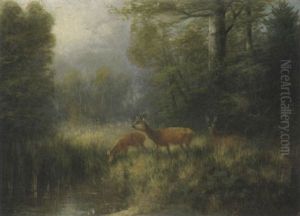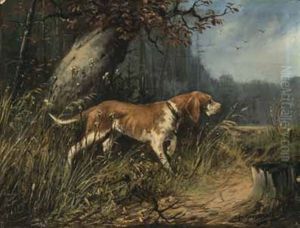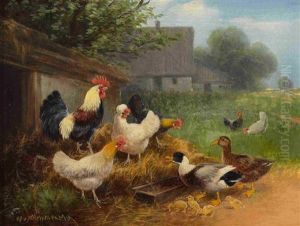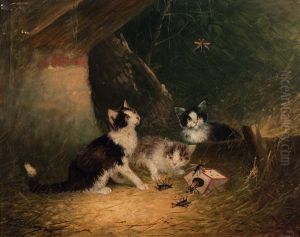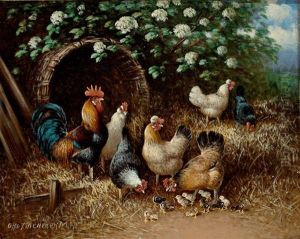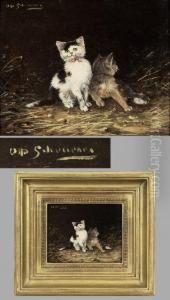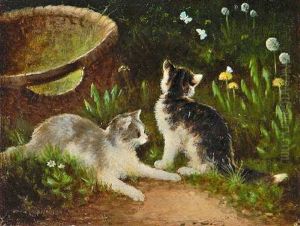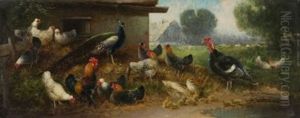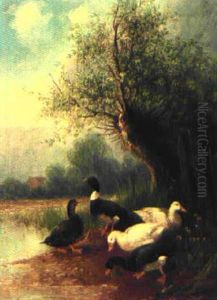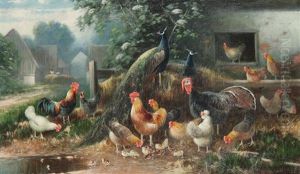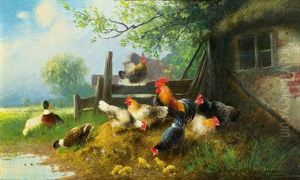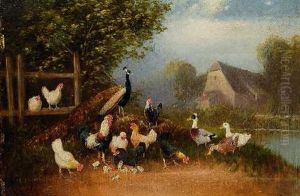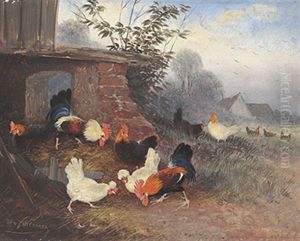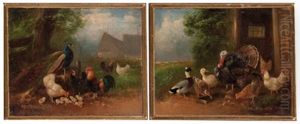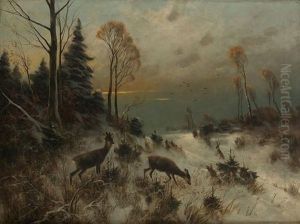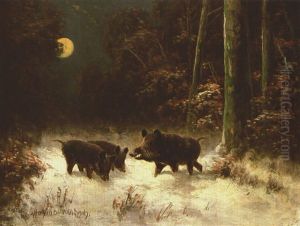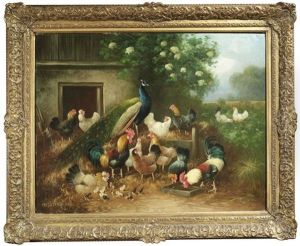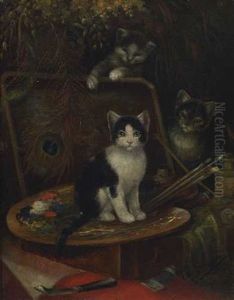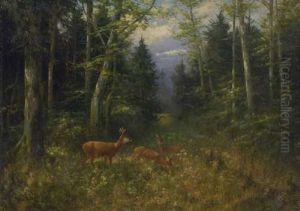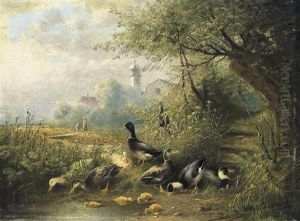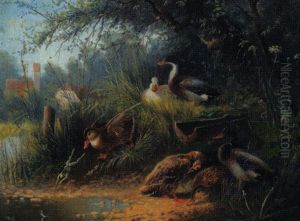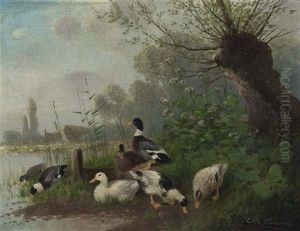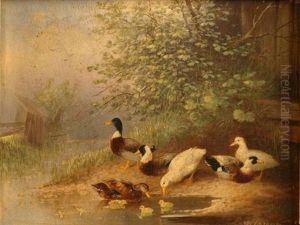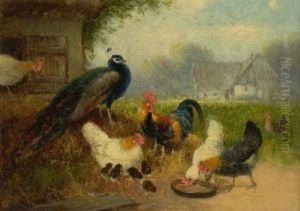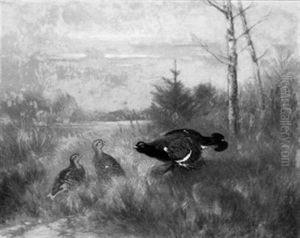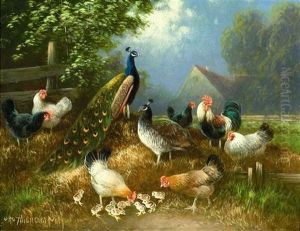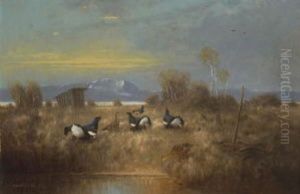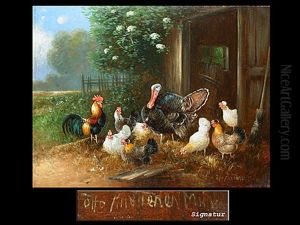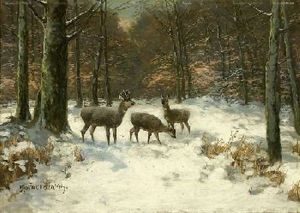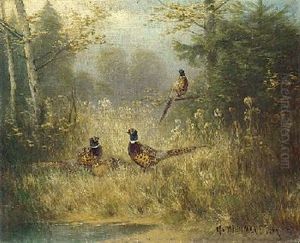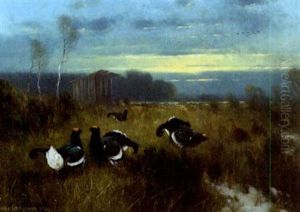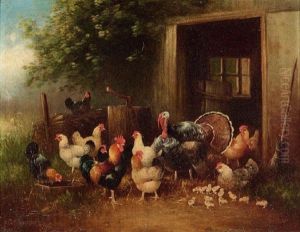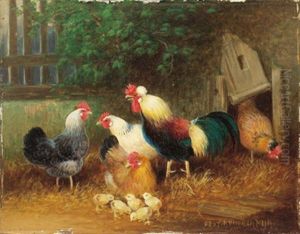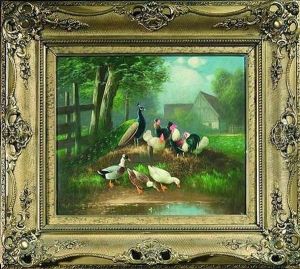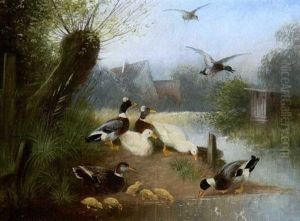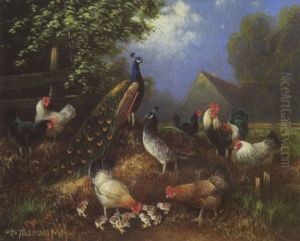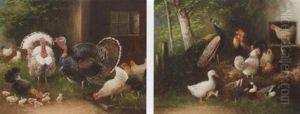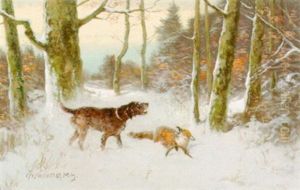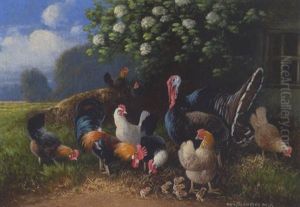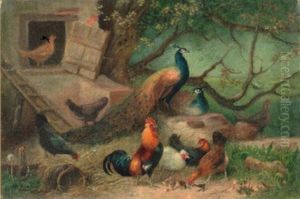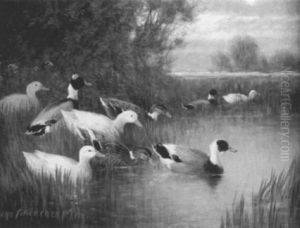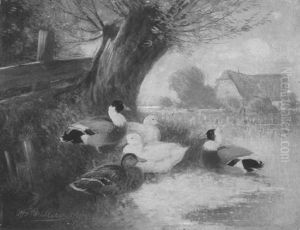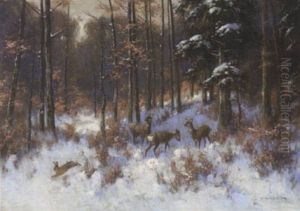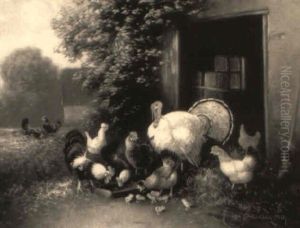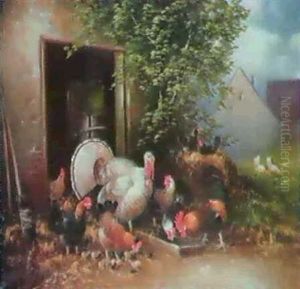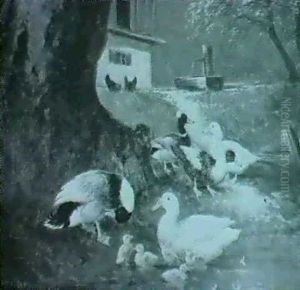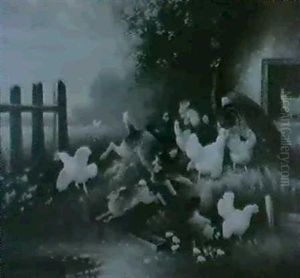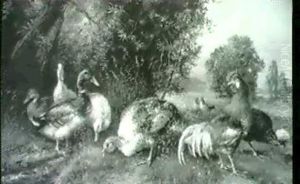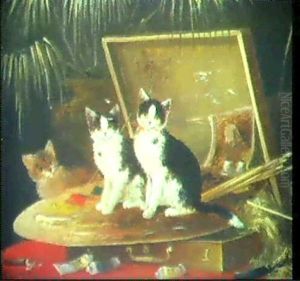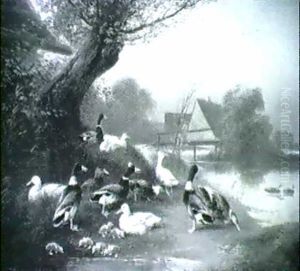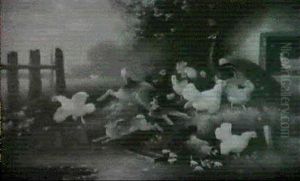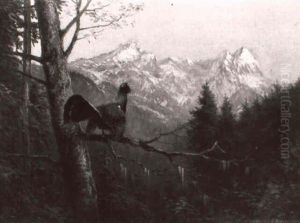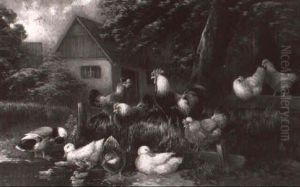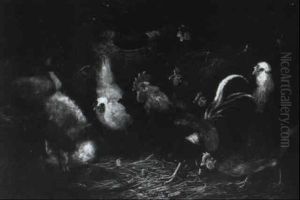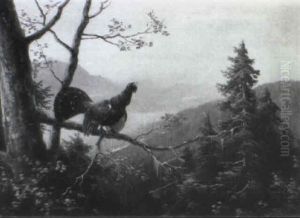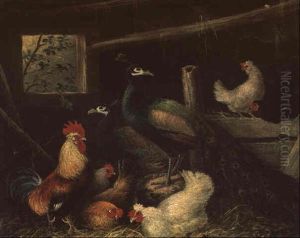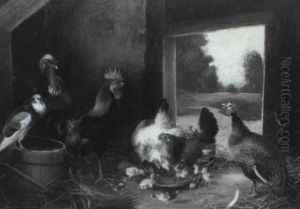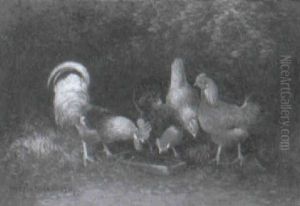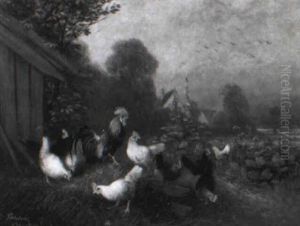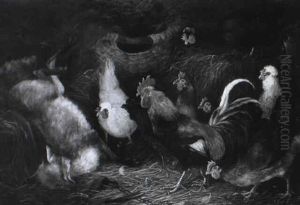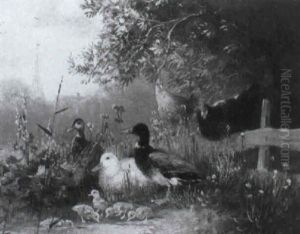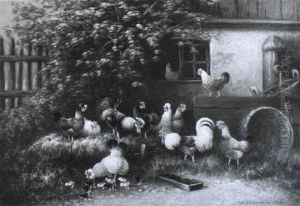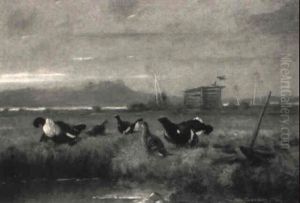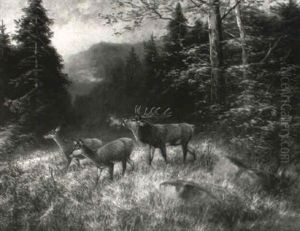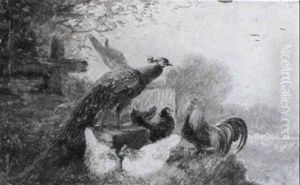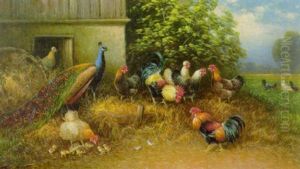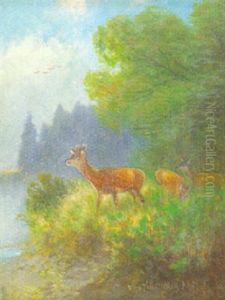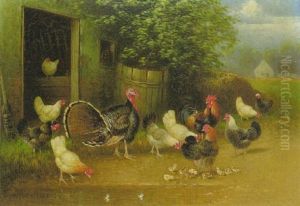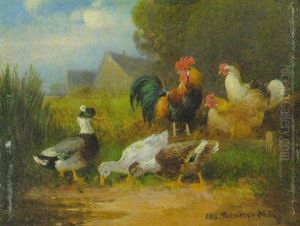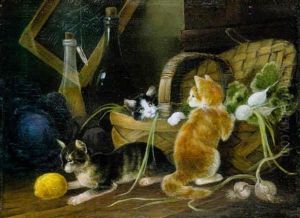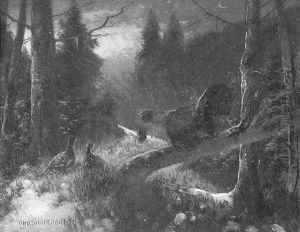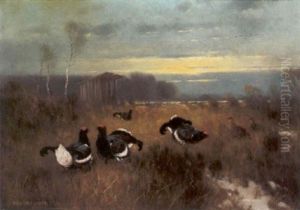Otto Scheuerer Paintings
Otto Scheuerer was a German painter known for his pastoral and animal paintings, particularly his depictions of sheep. Born on September 28, 1862, in Munich, Germany, Scheuerer was part of the Munich School, a group of artists active in the late 19th and early 20th centuries who were known for their naturalistic and often genre-style works.
Scheuerer studied at the Academy of Fine Arts in Munich, a prestigious institution that attracted many aspiring artists of the time. He was a student of Johann Caspar Herterich and Wilhelm von Diez, both of whom influenced his style and subject matter. Scheuerer's early works were in line with the traditional academic painting of the era, but he soon developed a softer, more impressionistic technique, with a particular focus on capturing the delicate interplay of light and shadow.
Throughout his career, Otto Scheuerer remained focused on the bucolic and pastoral themes. His paintings often featured sheep and shepherds, set in tranquil landscapes. The animals in his paintings were rendered with great care and a sense of personality that resonated with audiences. His works were characterized by a gentle realism, with a harmonious palette and a skillful rendering of the textures of wool and grass.
Scheuerer's art was well-received, and he exhibited his work at various venues, including the Glaspalast in Munich, where he won a gold medal for his work in 1899. Despite the changes in artistic trends over the course of his career, Scheuerer stayed true to his preferred subjects and style, which continued to be popular with collectors and the art-loving public.
Otto Scheuerer's work has been compared to that of other animalier or animal painters of the time, such as Heinrich von Zügel and Emile van Marcke, though Scheuerer maintained a distinct approach that emphasized pastoral serenity over the more dynamic compositions of his contemporaries.
Scheuerer's life and career were largely spent in Bavaria, where he drew inspiration from the local landscape and rural life. He passed away on December 13, 1934, in Munich. Today, his works can be found in various art collections and are appreciated for their charming portrayal of rural life and their contribution to the genre of animal painting.
